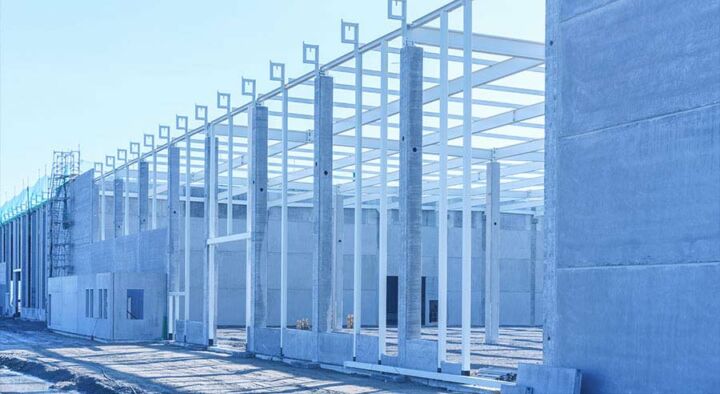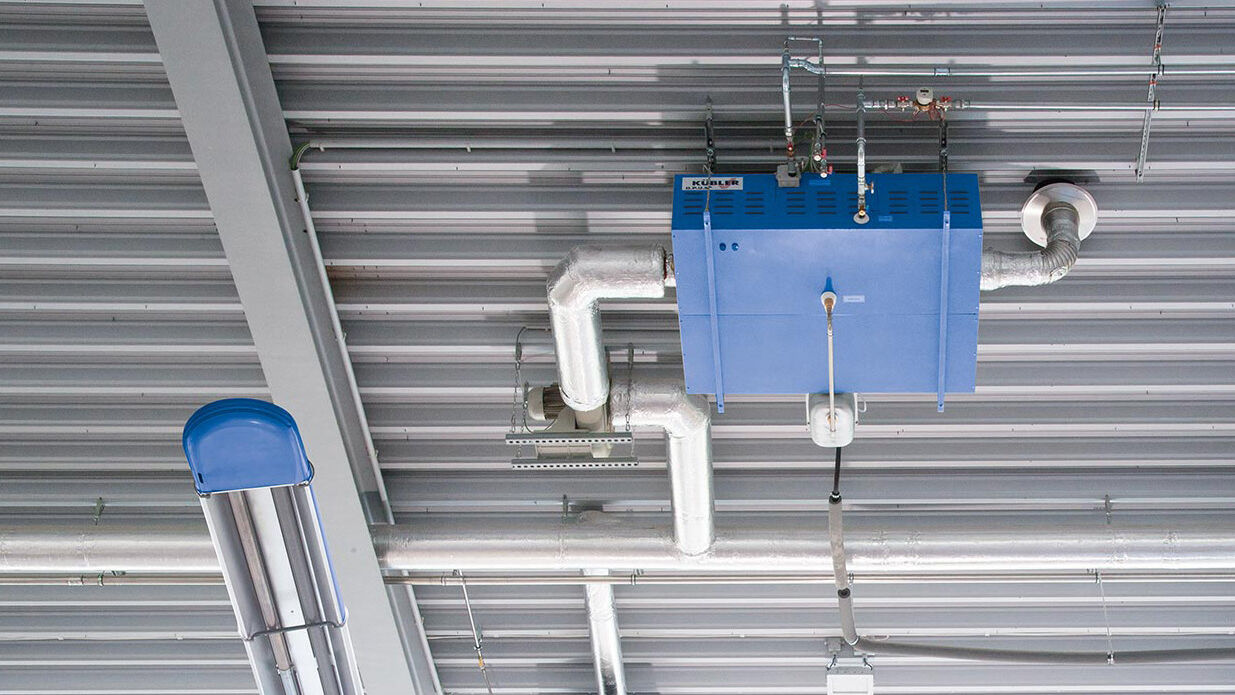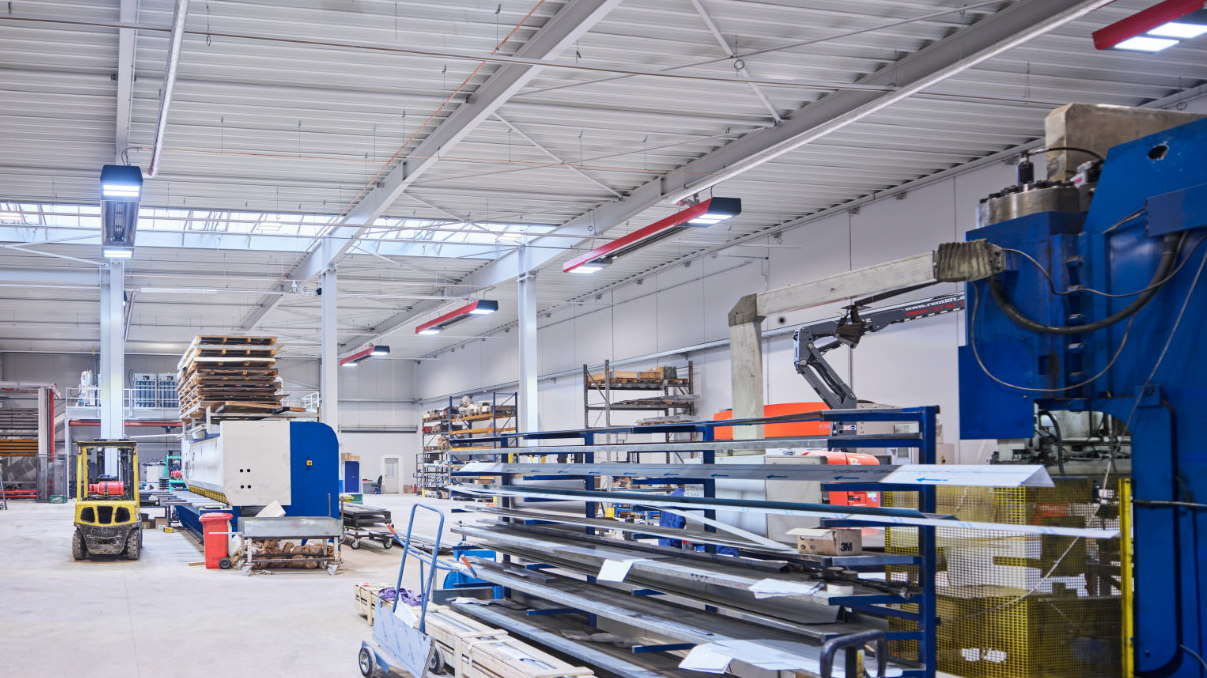Are you looking for an economical and future-proof heating system for your new hall construction? Then you should invest enough time in planning. And avoid the following mistakes.
More than ever, a hall heating system influences the profitability and freedom of action of companies. Why? Because energy prices are rising and environmental regulations are becoming stricter. But which heating solution is the most energy-efficient and future-proof? Companies don’t have much room for experimentation. Once installed, heating systems generally remain in operation for up to 20 years. All the more important: invest a lot of time in heating planning before making the investment. A phase in which you should avoid the following mistakes.
Mistake No. 1: Treat a hall like an office building
Offices are usually well-insulated rooms with low ceiling height. Their volume is almost identical to the useful zone. Therefore, it is not a waste of energy to heat the entire room. However, the situation is quite different with industrial and commercial halls. Anyone who approaches this with the heating approach for multi-story buildings is giving away heat and money. This is because it is usually quite sufficient for the working area to be warm. As a rule, the lower two meters of the hall are warm – in the case of a hall with a ceiling height of ten meters, only 20 percent of the room volume. Or even just the part where people are working.
With such a targeted heating approach, the principle applies: the smaller the ratio between the usable area and the total volume, the more decisive is the quality of heat transfer. Infrared heaters achieve a high quality in this respect. Instead of heating the air per se, the decentralized heaters generate electromagnetic waves that are converted into heat only as soon as they encounter solid bodies. In combination with intelligent controls, energy savings of up to 70 percent can be achieved compared to conventional heating systems. This is a significant factor, as it can be assumed that energy will become more expensive in the coming years.
Mistake No. 2: Usage profile and requirements are not specified.
Just install a heater and turn it on until it’s halfway warm everywhere? This is how companies have wasted energy for decades. A waste that can become a competitive disadvantage in times of rising energy prices. That’s why you should think in advance about the features of your new hall: Where exactly in the hall do employees need heat, where can it stay cooler? How much air exchange takes place in the hall and when? How much waste heat do machines and systems already produce? How can this be used intelligently?
If you know these parameters, specify requirements and create a detailed usage profile, a responsive heating system with an intelligent control system can adapt to the hall’s needs like a tailor-made suit. And save a lot of energy. After all, the most economical heating system in terms of consumption is the one that the operator does not even have to switch on. Why the name dark radiator is outdated from a technical point of view
Mistake No. 3: Forgoing networking and an intelligent control system when building a new hall.
Intelligent control is a luxury? Networking a superfluous gimmick? No, digitalization is essential for heating halls in an energy-efficient manner and saving enormous amounts of money in the future. Therefore, be sure to check whether the heating system for your new hall construction has arrived in the age of digitalization. Networked devices, modern controls and analysis software make it possible to adapt heating systems to hall dynamics and thus save energy. In addition, hall operators can better meet the requirements of the DIN 50001 standard with software-supported heating systems. With this certification (or a registered environmental management system in accordance with the EMAS regulation), you fulfill the requirements for partial exemption from the EEG apportionment or future relief from electricity and energy tax.
Mistake No. 4: Focusing only on investment costs
Focusing only on initial investment costs for decision making? That can also be a mistake. Because much more important still are the total costs incurred throughout the life cycle of the heating system – costs for service, maintenance and repair included. One particularly interesting part of this total cost of ownership (TCO): consumption costs. Here, you should definitely not let the provider get away with a pi-by-thumb estimate. Nowadays, it is easy to provide detailed and reliable information in accordance with DIN V 18599 – including annual primary energy requirements, energy costs and CO2 emissions. Information that gives you planning and decision-making security.
Mistake No. 5: Not taking a close look at the supplier
On the way to an economical heating system for your new hall construction, you should not only take a close look at the quality of the equipment, but also at the competence of the manufacturer. Research whether the company can provide credible references. Equally important, to be spared long downtimes, be sure to check that the vendor will still be offering service and spare parts supply fifteen years from now. After all, it’s annoying if you’re on your own when it comes to servicing your shop heating system after just a few years. You can also inquire whether the company has its own research and development department. Such a department – especially in combination with convincing references – is usually a reliable indicator of competence and experience. Two points that are important for finding and operating an economical and future-proof hall heating system.
These articles might also interest you
Let's take the next step together
Every hall is different. With more than 30 years of company history, there is hardly a requirement that is unknown to us. Together with our customers, we have implemented the appropriate solutions. If you are ready to implement economically proven heating concepts for your hall, then you have come to the right place.










